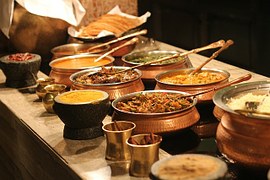India Etiquette
When traveling abroad it is a sign of respect to try and understand some of the cultural differences.
Learning the differences in etiquette and customs shows sensitivity.
If INDIA is your destination, one should know the importance of the “right hand”. Shaking hands, eating, passing an item, receiving a gift, are all done with your right hand.
If you are unfamiliar with the customs, observe the locals don’t improvise. If you offend someone apologize immediately. Always remember the golden rule of etiquette, when in doubt between what to do or not, do the “kind” thing.
Treat people the way you want to be treated.
India Etiquette and customs to remember:
The first rule to remember has to do with dining. In many places in India the use of knife and fork for eating is not required or common. In India eating is done with your right hand and specifically with your fingers, even if it sounds simple, the custom is to eat with your fingers and not get your whole hand or palm dirty. Indians eat with their right hand only. In India, as in the Middle East and across Asia, the left hand is considered dirty. The left hand is for cleaning your body, feet, bathroom functions and also to put on and take off shoes. The right hand is for eating and social functions, giving or receiving gifts, shaking hands, serving food, passing food or any item, using napkin and more.
Another important etiquette to remember has to do with “Jutha” which means food contaminated or unclean due to contact with saliva. Consequently, the whole concept of sharing or tasting someone else’s food is to be avoided. Unless the person you share with is a spouse, close family or friends do not offer to share or taste.
Before eating and after you are done eating you must wash your hands.
When visiting religious monuments always take your shoes off, wear proper attire, nothing offensive or disrespectful. Women should cover shoulders and legs
Before entering someone’s home take off your shoes
In India the color white is for mourning
The dress code for woman is modest and humble, shoulders and legs should be covered
Proper attire is important in India
A well dressed and well groomed person will make a good impression
Public displays of affection are to be avoided, kissing, hugging, etc…
Do not cross your legs and have your soles point at anyone
Use proper English, no slang or rude, impolite words or expressions
When meeting people for the first time, be polite and formal
Indians that meet foreigners can ask what seems like personal or private questions, it is not because they are being rude but on the contrary they are being social and ask personal questions regarding work, family, your purpose to be in India to be polite and social
You should be aware, in India social hierarchy is important
Status within society, family, work, friends and education is important
The senior people at work, at home, at a social function should be shown respect by their juniors
You should show respect to high ranking individuals and to your elders
When greeting someone in India the most common way is to put both palm of your hand together at chest level and say “Namaste” or for more formal situations you say “namaskar”
Women use the Namaste mode of greetings more often as it is not customary for them to shake hands, especially with men
If man shake hands it’s a light shake not a firm shake like in the west.
When greeting people of high social status the custom is to touch their feet with your right hand and then touch your chest
When meeting or greeting people with titles, you should use the title in the greeting. Dr., professor, your honor, Mr., Mrs., miss should be used
Strangers can be referred to as sir or ma’am, uncle or aunty when you know them
Keep a distance from people when you talk to them (about 3 feet), no need to touch people while talking with them
If you touch someone with your feet it is rude so one should apologize
Indians are very hospitable; they will offer you something to drink along with some sweets
It is rude to decline food or drink, you can take a small piece just to taste and in order not to offend (always with your right hand)
Indians are not wine drinkers, so do not expect any wine or look for wine lists in restaurants, it is not common
Beef and Pork are not served or eaten by most Indians, for religious and cultural reasons
When invited to dinner in a home, it is very nice to bring a gift to the host or the children, avoid bringing alcohol or anything made from leather (as you do not know who in the family is or is not a vegetarian)
When visiting rural area women should wear loose clothes, in the big cities it is more modern but women should still be cautious
Men can wear pants, jeans, shirts, t-shirts
Indians are very colorful; do not be afraid to wear bold colors (white is not recommended)
If invited to dinner at someone’s home, do not be surprised to have the woman/hostess in the kitchen preparing and serving all night
Do not wait for the hostess to sit before you start eating, follow the host or the local custom
When in doubt follow the others, watch what others are doing. It is also acceptable to ask when you are not certain of something
